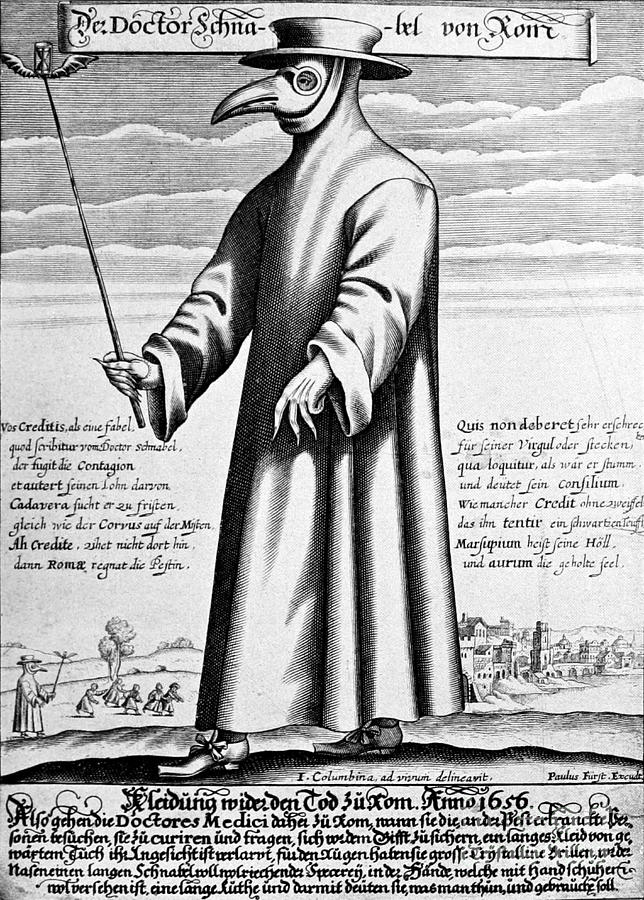
Plague Doctor, 17th Century

by Science Source
Title
Plague Doctor, 17th Century
Artist
Science Source
Medium
Photograph - Photograph
Description
Paulus Furst's 1656 engraving of Dr. Schnabel ("Beak") of Rome wearing protective clothing typical of the plague doctors of Rome at the time. The mask had glass openings for the eyes and a curved beak shaped like that of a bird. Straps held the beak in front of the doctor's nose. The mask had two small nose holes and was a type of respirator which contained aromatic items. The beak could hold dried flowers, herbs, spices, camphor or a vinegar sponge. The purpose of the mask was to keep away bad smells, which were thought to be the principal cause of the disease in the miasma theory of infection, before it was disproved by germ theory. Doctors believed the herbs would counter the smells of the plague and prevent them from becoming infected. The beak doctor costume worn by plague doctors had a wide brimmed leather hood to indicate their profession. They used wooden canes to point out areas needing attention and to examine patients without touching them. The canes were also used to keep people away, to remove clothing from plague victims without having to touch them, and to take a patient's pulse.
Uploaded
January 11th, 2015
Statistics
Viewed 4,485 Times - Last Visitor from Cambridge, MA on 04/25/2024 at 12:56 AM
Embed
Share
Sales Sheet
Comments
There are no comments for Plague Doctor, 17th Century. Click here to post the first comment.






















































